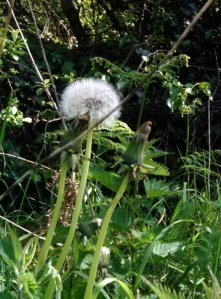Collected by pupils of Killina School

(abridged)
1. Asses’ milk for “consumption” (taken fasting).
2. Goat’s milk for “consumption”.
3, Sheep’s milk for sore throat (heated).
4. Carry 3 small potatoes in your pocket for rheumatism or for toothache.
5. Foam of new milk for toothache.
6. Ferrets “leavings” – cure for measles.
7. Fox’s tongue to take out a thorn.
8. Dog’s lick for a sore.
9. Fairy mushroom to stop bleeding.
10. Cobweb to stop bleeding.
11. “Goose gall” rubbed on lumps cure them.
12. Goose grease as an embrocation for stiff knees or joints.
13. Snail in shell rubbed to a corn cures it.
Rub snail on corn – hang up on tree seven days. Repeat if corn is not cured first.
14. Cure for boils – plaster made of sugar soap and soda. Apply on linen rag to boil.
15. Leaf of new cabbage bandaged on sores.
16. Juice of dock leaves for stings – nettles, bees.
17. Rub gold wedding ring on a sty in the eye.
18. Rub penny on a fresh bruise to heal it – or piece of raw mutton.
19. Boiled garlic juice for rheumatism.
This selection of lore comes from the duchas.ie website. It comprises part of the National Folklore Collection, property of University College Dublin held in trust for the people of Ireland. Content was collected by local children in 1937 and 1938, carefully transcribed under the supervision of their teachers and forwarded with great pride to form part of the Collection





